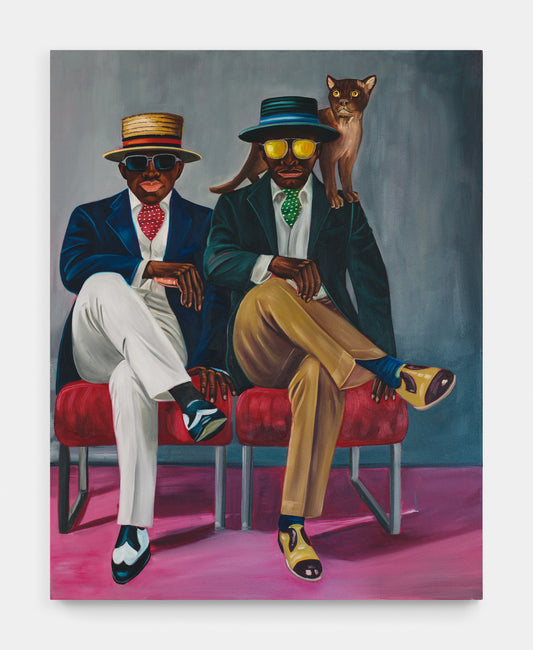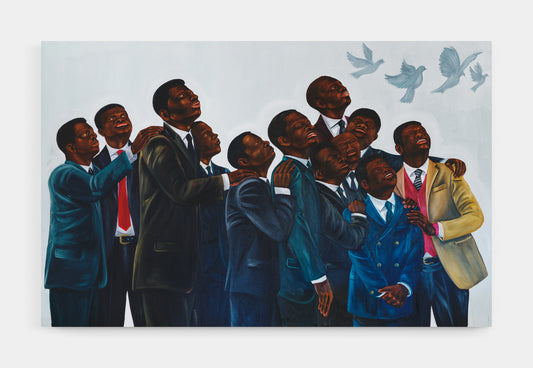'TOTEM' - Zemba Luzamba
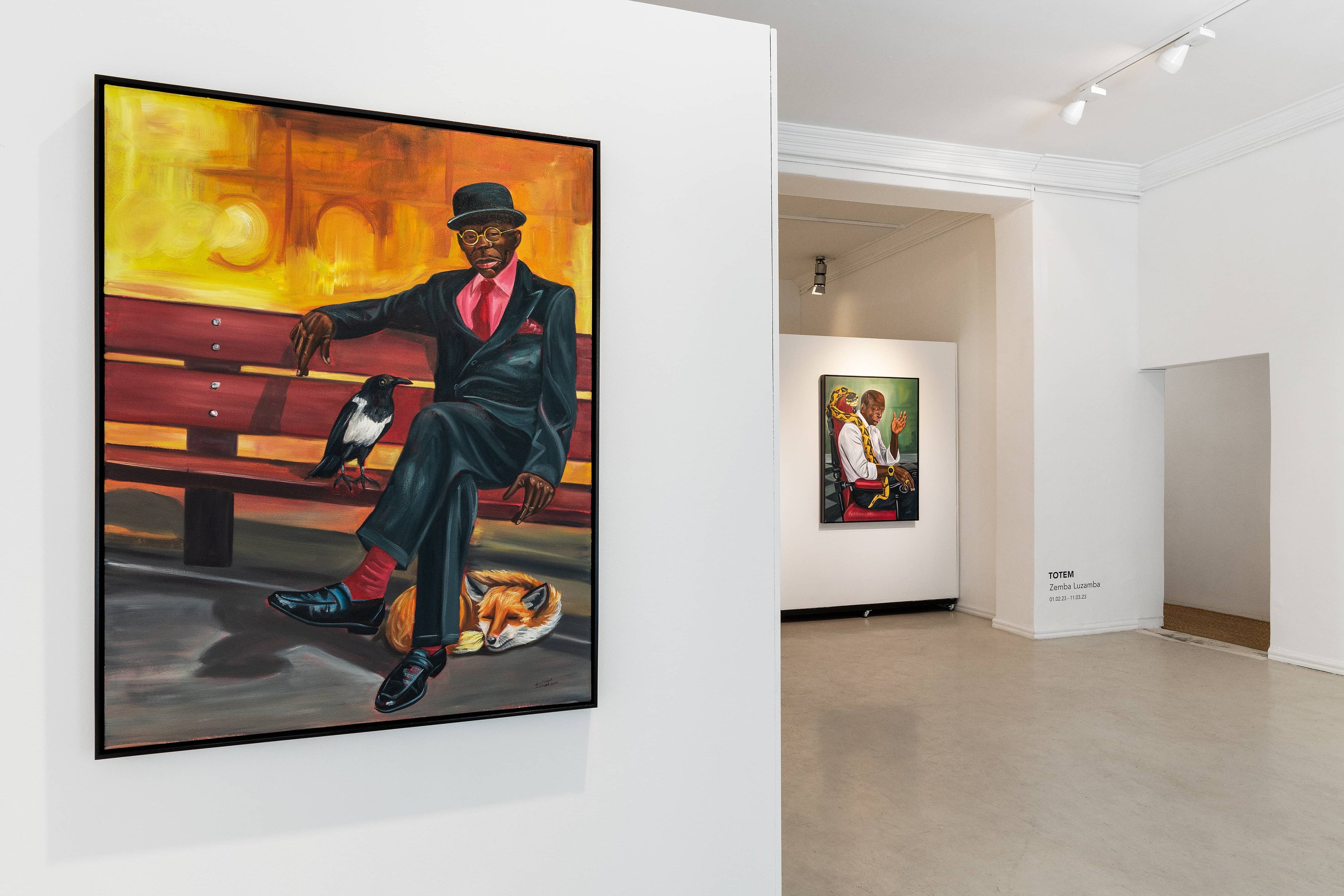

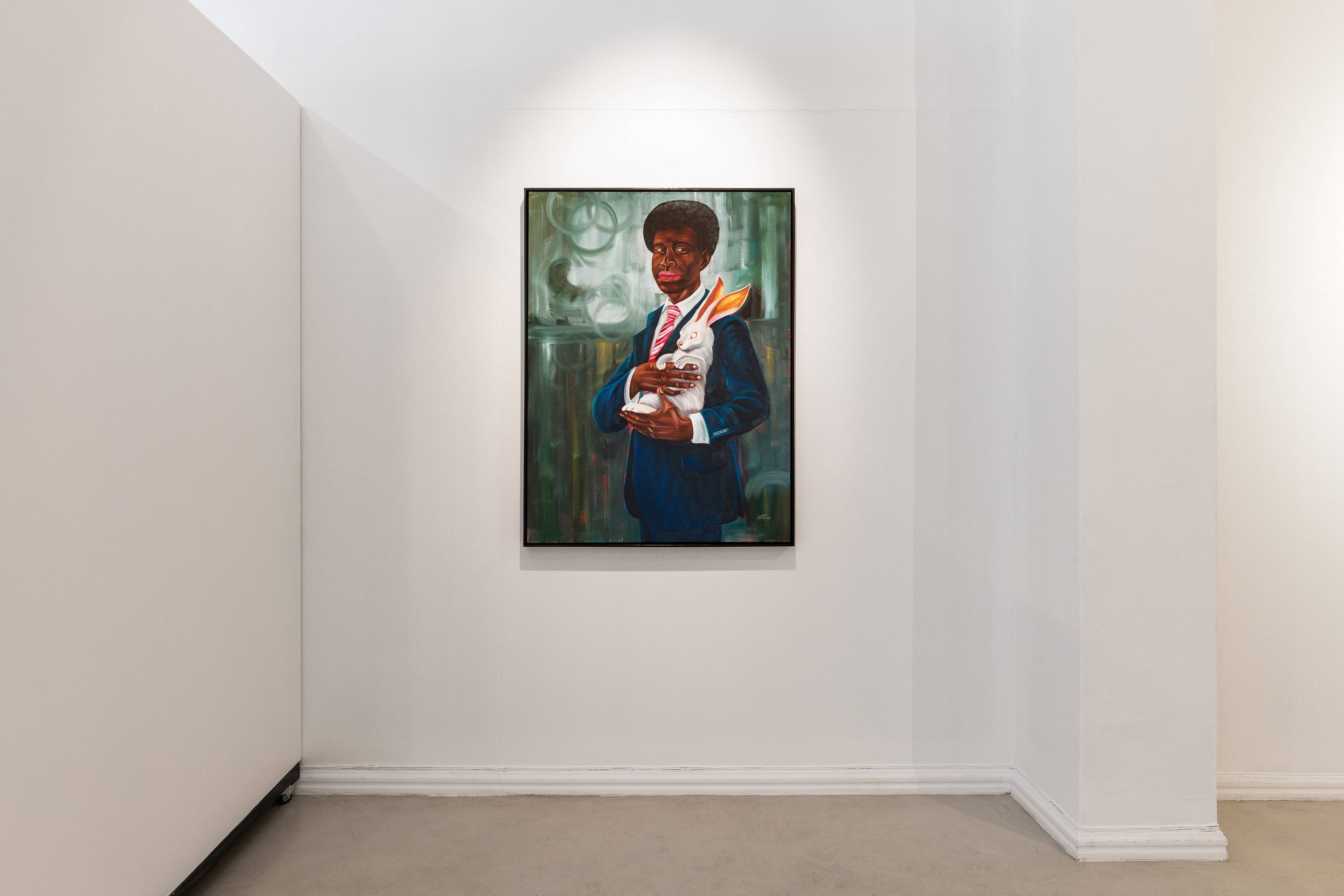

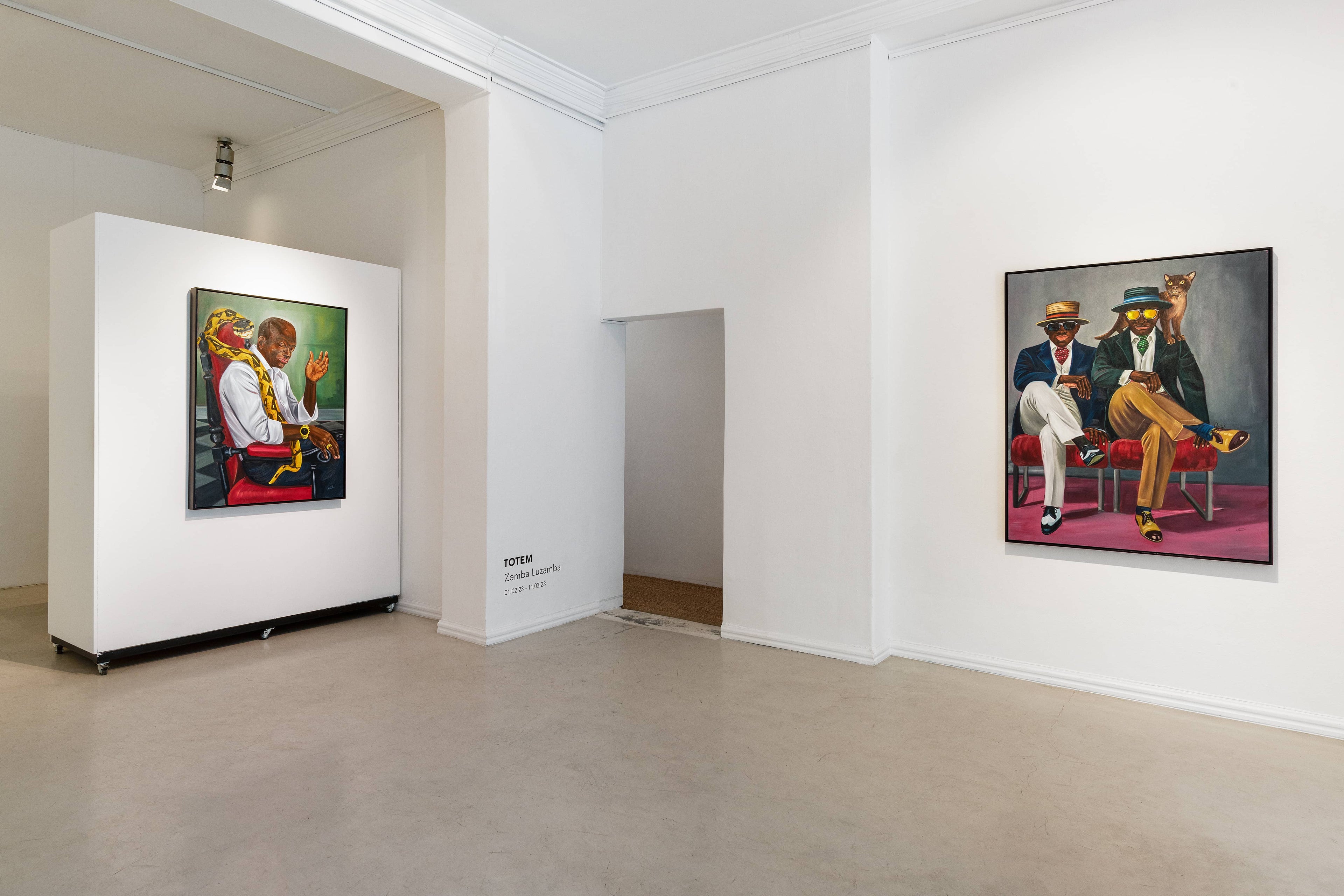
Collection: 'TOTEM' - Zemba Luzamba
TOTEM
Text by Khanyisile Mawhayi
Zemba Luzamba is thinking about animals as they appear in fables and totems, the stories we tell to children for wisdom and warning, and the sacred symbols that represent a unified group of people. With these in mind, this Congolese painter has created a body of work which uses figuration, fashion, and colour to explore the ways we assume and judge character. More playful than his highly politicised works, this new body of work lends itself to the spiritual with a deceptively childlike visual language that challenges the viewer to consider the complexity of identity.
TOTEM is inspired by the close relationship that Spanish artist Pablo Picasso had with the Minotaur, a fearsome monster of Greek myth with the body of a man and the head of a bull. The creature was a recurring motif in Picasso’s work from the1920s to the 1970s, with the artist saying, “If all the ways I have been along were marked on a map and joined up in a line, it might represent a minotaur.” Similarly, Luzamba’s paintings suggest such a relationship between the subjects in his paintings and the animals they are paired with.
This relationship goes beyond the surface-level associations of the sly fox, wise owl, or early rooster as the human figures interact with their assigned animal, implying an intimate understanding and relating between them. Free Spirits gives the impression that anyone or anything can be freed from the imposed ideas of who they are, asserting that we have agency over our own identities. The painting depicts a group of men gazing up at a flock of doves. In this work, the animals fly away from humans, not tying them to the shallow physical connotations of the animals but moving them into a spiritual realm.
One key fable in the conceptualization of the exhibition is Jean de la Fontain’s fable of the Raven and the Fox, a cautionary tale about flattery. In the story, the raven, perched in a tree and holding food in its mouth, is tricked by a slew of compliments from a cunning fox into dropping its meal down to the ground. This fable contains numerous lessons, and Luzamba depicts the painting of the same name with all of the characters separated from one another. This is the only painting where there is more than one animal and they are not interacting with the subject in the painting. Instead, the well-dressed man sits on a bench, his gaze directly at the viewer, oblivious to the crow beside him or the fox beneath.
Although there are conceptual and stylistic evolutions with this body of work, fashion and dress code remain key parts of Luzamba’s practice. Like the sapeurs who inspired his previous works, the characters are impeccably dressed, with accessories such as gold watches, spectacles and hats that give us clues as to their age and who they may be in society. The artist also departs from the block colour backgrounds he has become associated with and is more expressive with the depiction of space. TOTEM presents the viewer with the chance to enter an anthropomorphic world where the artist dares us to revaluate the ways in which we perceive people’s nature.
Works on exhibition
-
Unique Print
Vendor:Zemba Luzamba (1973- )Regular price R 182,602.95Regular priceUnit price / per -
Free Spirit
Vendor:Zemba Luzamba (1973- )Regular price R 328,685.31Regular priceUnit price / per -
Le Corbeau et le Renard
Vendor:Zemba Luzamba (1973- )Regular price R 110,000.00Regular priceUnit price / per -
Joy and Hope
Vendor:Zemba Luzamba (1973- )Regular price R 160,000.00Regular priceUnit price / per -
Ready Clean
Vendor:Zemba Luzamba (1973- )Regular price R 110,000.00Regular priceUnit price / per -
Well Mannered
Vendor:Zemba Luzamba (1973- )Regular price R 110,000.00Regular priceUnit price / per -
The Precise One
Vendor:Zemba Luzamba (1973- )Regular price R 110,000.00Regular priceUnit price / per -
Sacred Power
Vendor:Zemba Luzamba (1973- )Regular price R 110,000.00Regular priceUnit price / per
More exhibitions
-
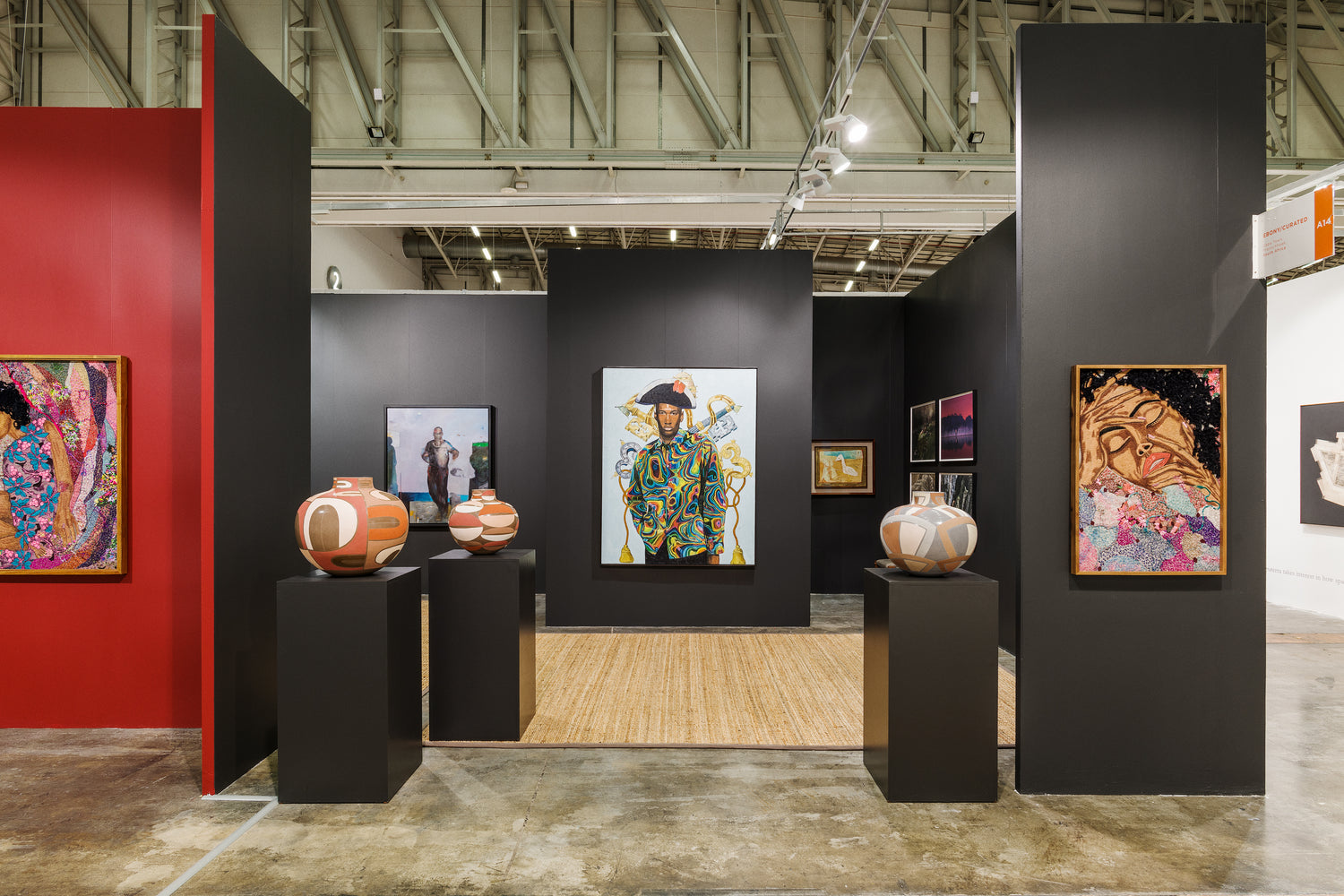
Investec Cape Town Art Fair 2023 | Main Section
Investec Cape Town Art Fair 16 – 19 February 2023 Cape Town...
-

Expo Chicago 2023
13.04.23 - 16.04.23Navy Pier, Chicago USABooth 414 EBONY/CURATED is proud to present...
-
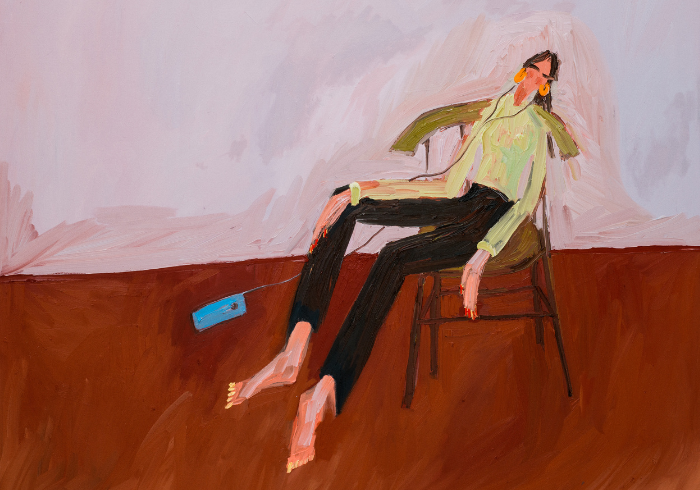
African Galleries Now 2022
We are delighted to be participating in African Galleries Now in partnership...

